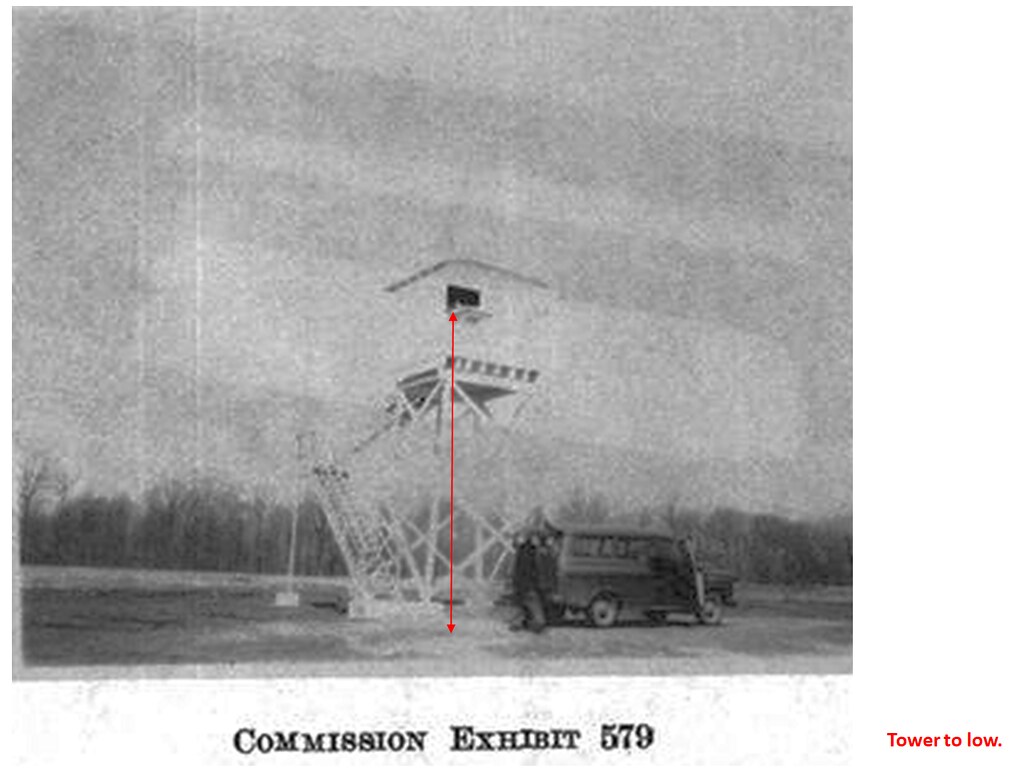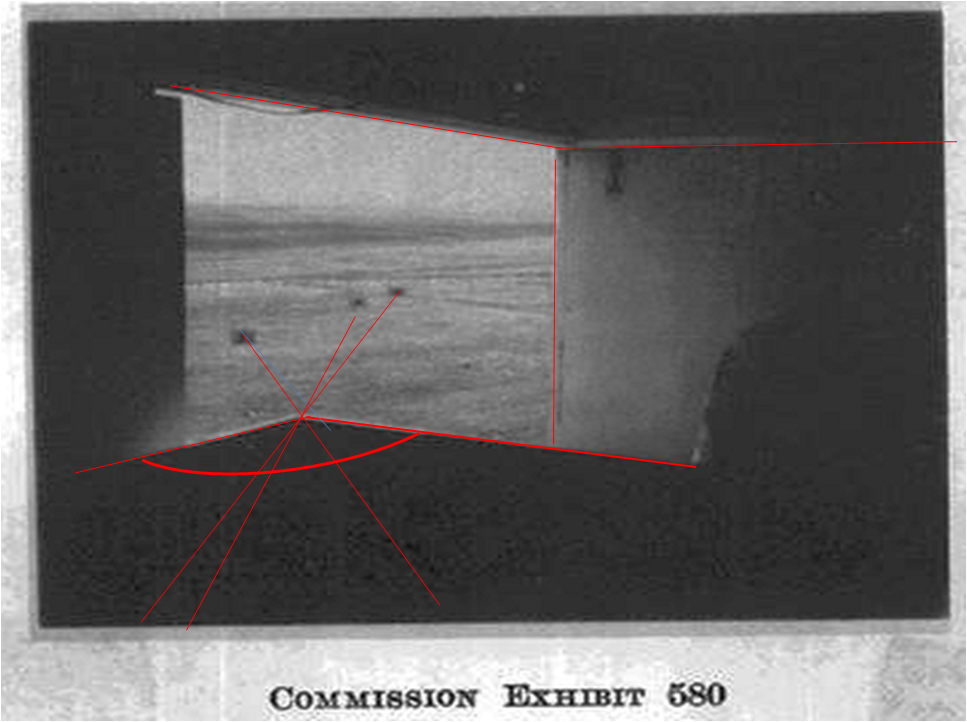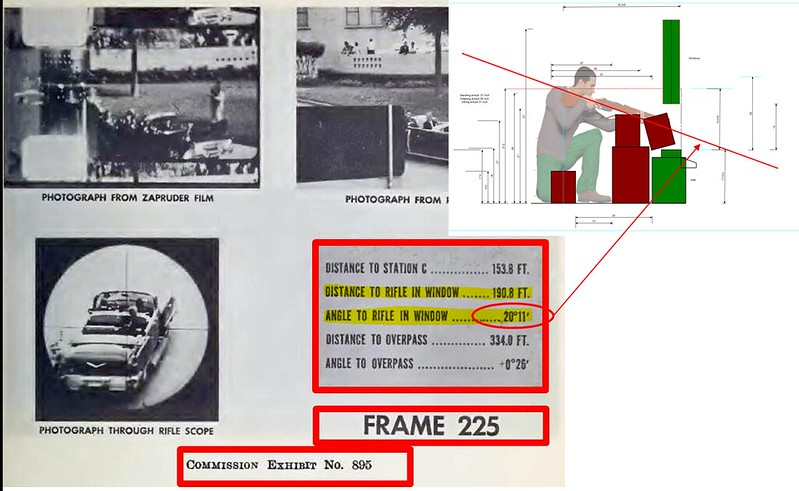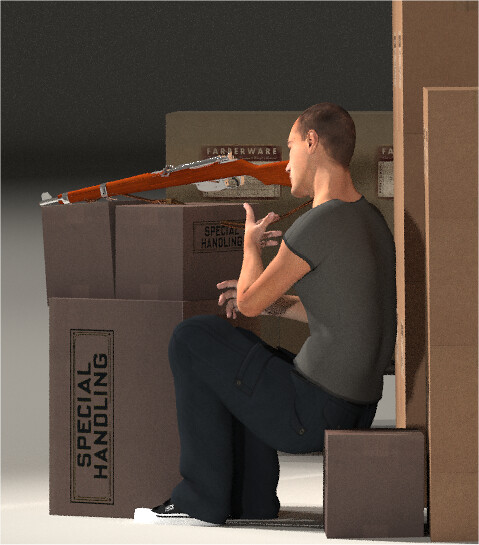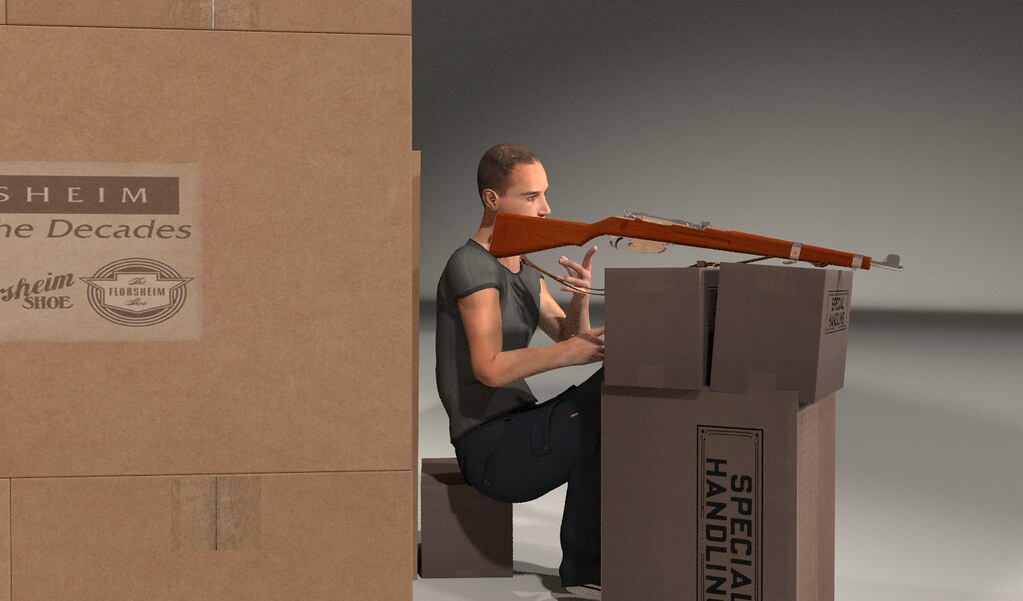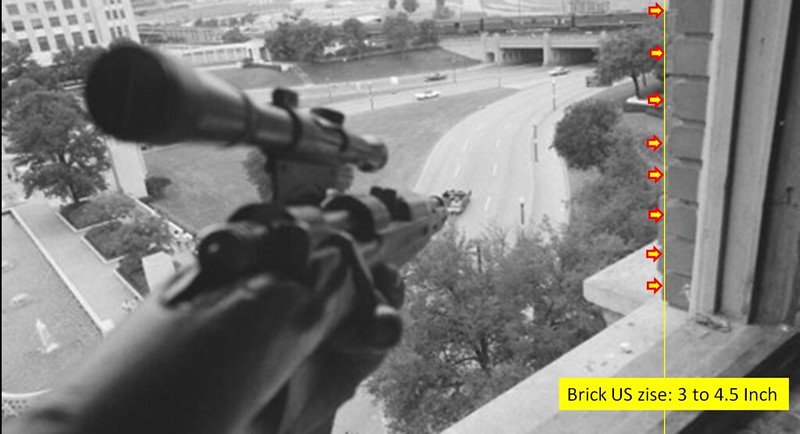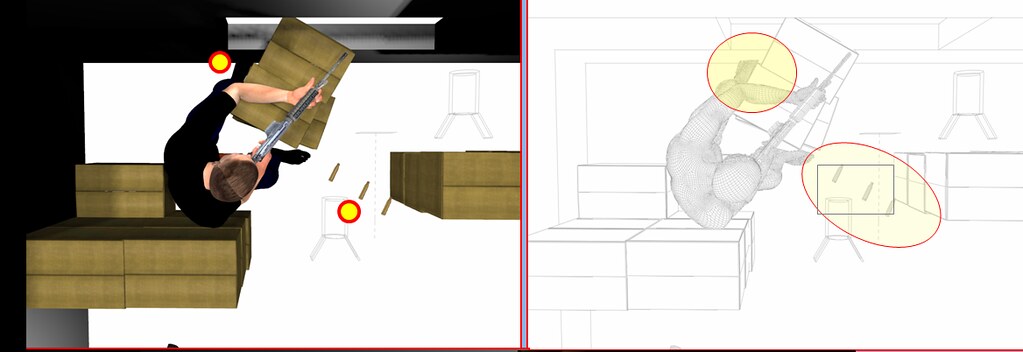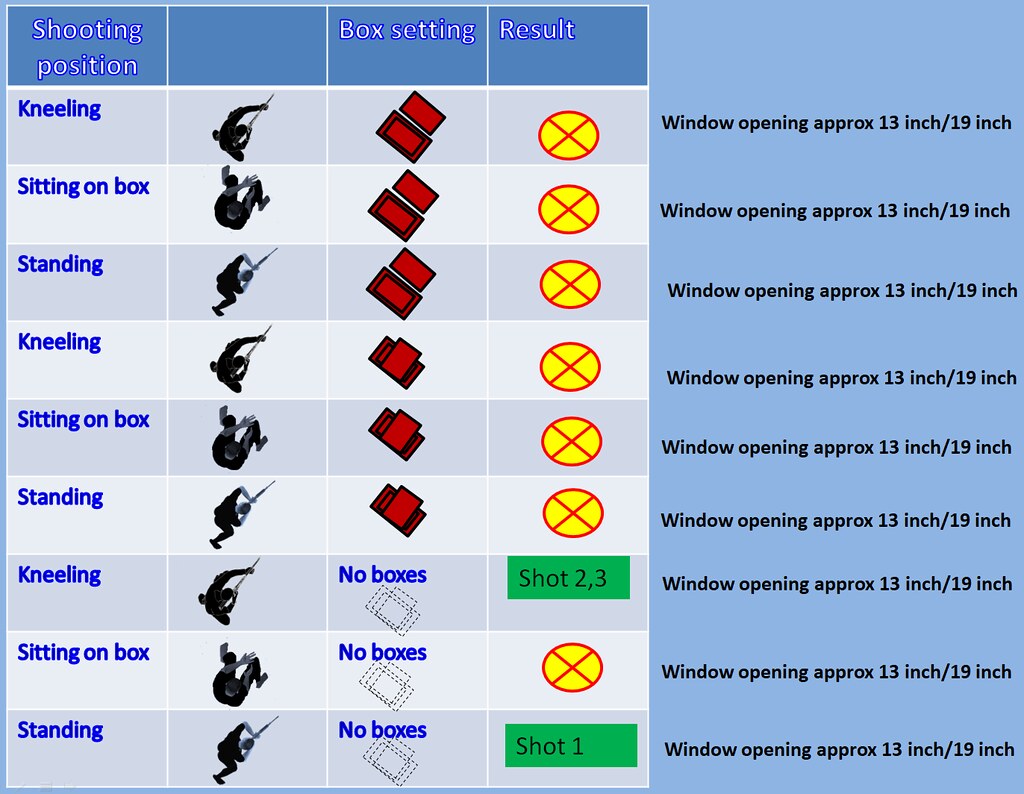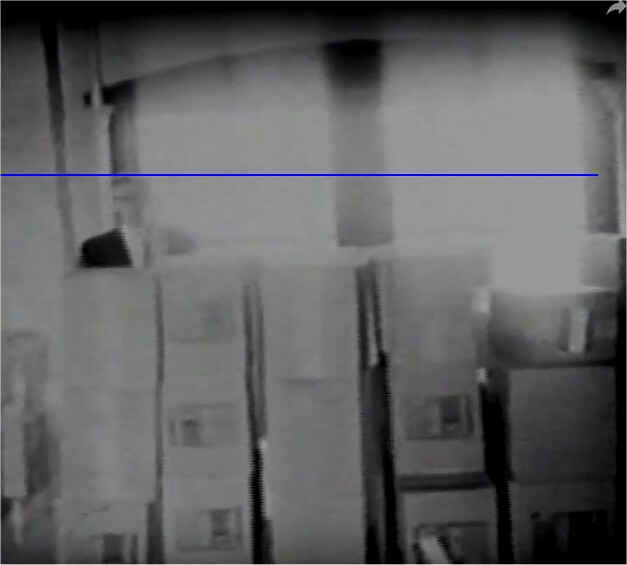Post by Paul Ernst on Aug 31, 2018 9:45:15 GMT -5
This thread is about the cramped snipers nest, and the possibility that it was not the source of the shots.
We will point out the discrepancies throughout.
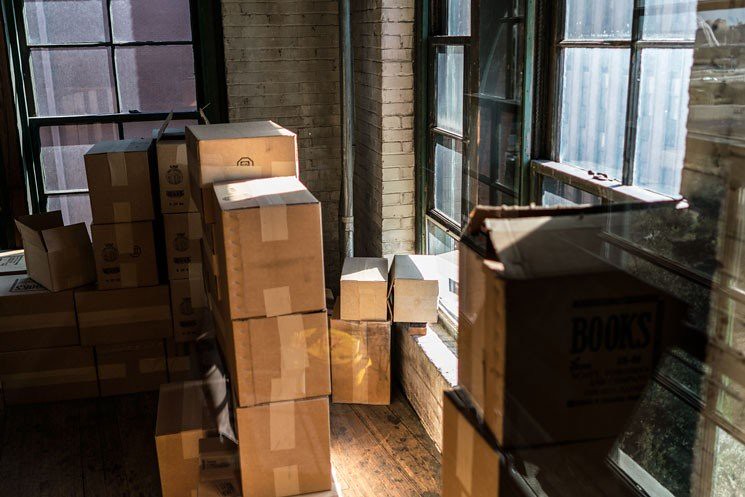
First what is "the sniper's nest" [SN]?
It's in the inside left corner of the sixth floor of the TSBD - it is surrounded by a wall of boxes.
But Lee didn't build that wall, a crew of men re flooring were doing that through out the week, and all that morning.
So, boxes were along the edges of the flooring, allowing for a perfect spot for a smoke and / or lunch break, as the flooring is being done.
There is NO evidence Lee Oswald built the "snipers nest"
The Warren Commission tells us:
"He worked principally on the first and sixth floors of the building, gathering books listed on orders and delivering them to the shipping room on the first floor. He had ready access to the sixth floor, from the southeast corner window of which the shots were fired,"
Let's start with the building height - From the street straight up to the SN:
Here is Commission Exhibit 556 introduced by FBI Firearm expert Robert Frazier
Mr. EISENBERG - I am now going to ask you several hypothetical questions concerning the factors which might have affected the aim of the assassin on November 22d, and I would like you to make the following assumptions in answering these questions:
First, that the assassin fired his shots from the window near which the cartridges were found--that is, the easternmost window on the south face of the sixth floor of the School Book Depository Building, which is 60 feet above the ground, and several more feet above the position at which the car was apparently located when the shots were fired.
Second, that the length of the trajectory of the first shot was 175 feet, and that the length of the trajectory of the third shot was 265 feet.
And third, that the elapsed time between the firing of the first and third shots was 5 1/2 seconds.
Based on those assumptions, Mr. Frazier, approximately what lead would the assassin have had to give his target to compensate for its movement--and here I would disregard any possible defect in the scope.
Mr. FRAZIER - I would say he would have to lead approximately 2 feet under both such situations. The lead would, of course, be dependent upon the direction in which the object was moving primarily. If it is moving away from you, then, of course, the actual lead of, say, 2 feet which he would have to lead would be interpreted as a considerably less lead in elevation above the target, because the target will move the 2 feet in a direction away from the shooter, and the apparent lead then would be cut to one foot or 12 inches or 8 inches or something of that nature, due to the movement of the individual.
Mr. EISENBERG - Have you made calculations to achieve the figures you gave?
Mr. FRAZIER - I made the calculations, but I don't have them with me.
Mr. EISENBERG - Could you supply these to us, either in further testimony or by letter, Mr. Frazier?
Mr. FRAZIER - I have one object here, a diagram which will illustrate that lead, if you would like to use that. This is drawn to scale from these figures which you quoted as building height, and distances of 175 feet and 265 feet.
Mr. EISENBERG - For the record, these figures are approximations of the figures believed to be involved in the assassination. Will you supply the data at a later date?
Mr. FRAZIER - Yes; I can furnish that.
Mr. EISENBERG - May I have permission to introduce this as 556?
Mr. McCLOY - That will he admitted.
Mr. EISENBERG - Could you show the lead in that diagram, Mr. Frazier?
Mr. FRAZIER - In Commission Exhibit 556, it shows a triangular diagram with the vertical line on the left-hand side illustrating the height of the building. The figures of a 60-foot building height plus--
Mr. EISENBERG - That is height of the muzzle above the ground?
Mr. FRAZIER - No--window sill--60-foot window sill height above the ground, with an assumed 2- foot height in addition to accommodate the height of the rifle above the possible. the possible height of the rifle above the window sill.
The horizontal line extends outward from the building to a small rectangular block, and then a sloping line illustrates a 5-foot slope from the 175-foot point to the 265-foot point.

Notice that Mr. Frazier's diagram has both the shooter & the building facing the wrong way, but more importantly the diagram has no markings or figures to indicate what exactly is being demonstrated. But according to Frazier the window is 60 feet from the ground. NOTICE: Eisenberg also quotes the height at 60 feet.
Earlier in his testimony he introduced CE 560 - that is a diagram prepared by Commission attorney Eisenberg
Frazier discuss the distance to the target but nothing about the window height
Mr. EISENBERG - Now also you had made certain calculations concerning what we have been calling the lead that had to be given to a target, assuming various factors which were supplied to you. Do you have those calculations now?
Mr. FRAZIER - Yes, sir; the lead would amount to shooting over the target at 175 feet, a distance of 6.7 inches, and the decimal on that figure is not an accurate decimal because this figure relates to an average velocity of ammunition of this type, and is concerned with a speed of a vehicle which is also estimated, and a distance which may or may not be exactly accurate.
But at a ground speed of 11 miles an hour, it would be necessary to shoot over or lead a target 6.7 inches for the bullet to hit the intended spot on the target At 265 feet the lead would be .51 feet, or 6.1 inches.
I might say that the variation, that of less lead at the longer distance, is in great part due to the fact that the target is farther away and that the shot is more nearly in line with the direction in which the target is moving, which would account for much of the drop in the amount of lead.
And, in addition, I calculated this on the basis of the fact that there was a slight slope between the 175-foot and the 265-foot location downwards away from the shooter, which would also tend to more nearly cause the target to be moving in the same path as the bullet.
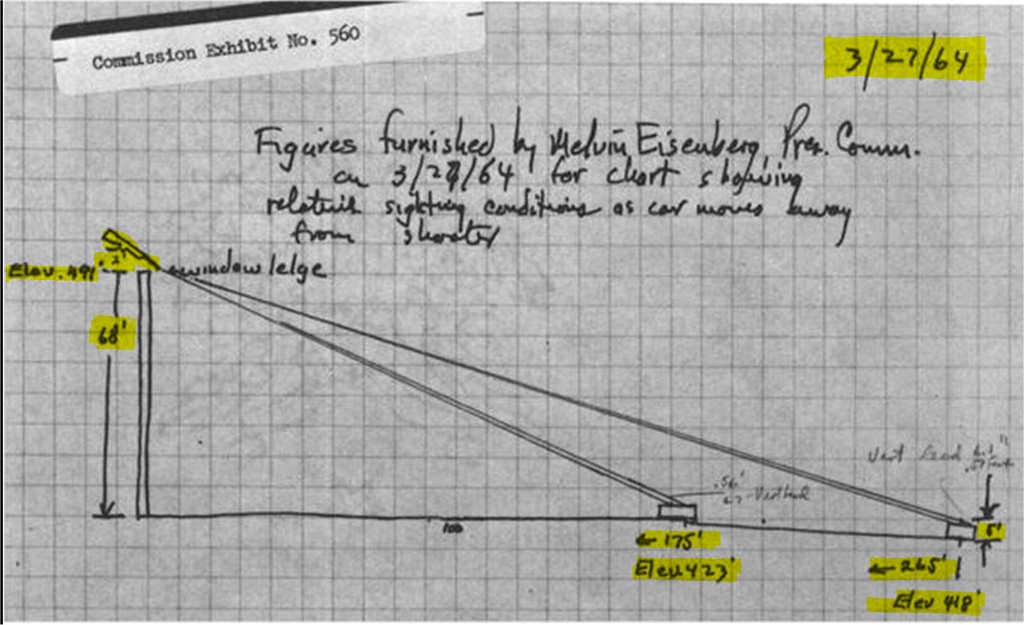
NOTICE the window height in the above diagram is different than what Mr. Frazier testified to and what Eisneberg asked - a difference of 8 feet
If we overlay the angles from a 60 ft window to a 68 ft window we have starkly differently trajectories.
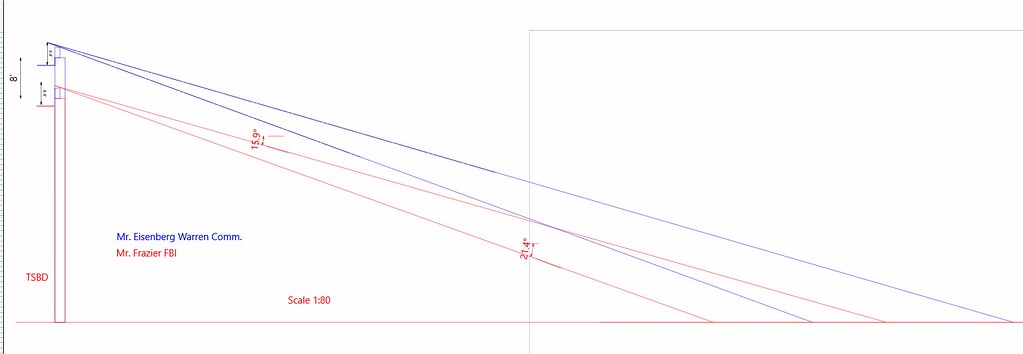
looking at the bottom of Eisenbergs CE 560, he actually puts the height of the gun to the ground at 70 ft at distance of 175ft,
and 75 ft, at a distance of 265 ft, allowing for a 5 ft road drop.
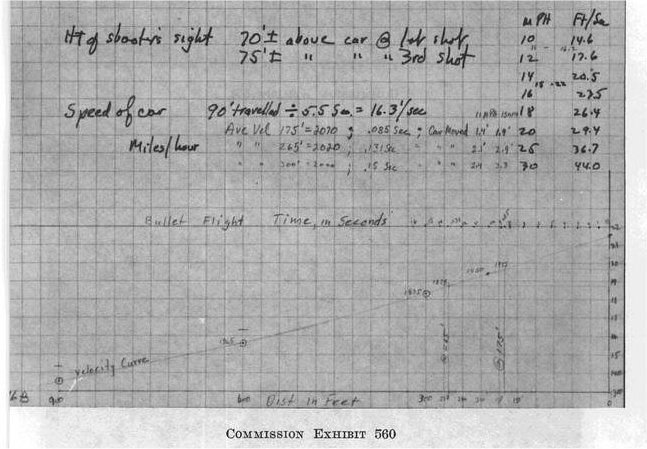
I think if you backed up from this angle you'd miss the window
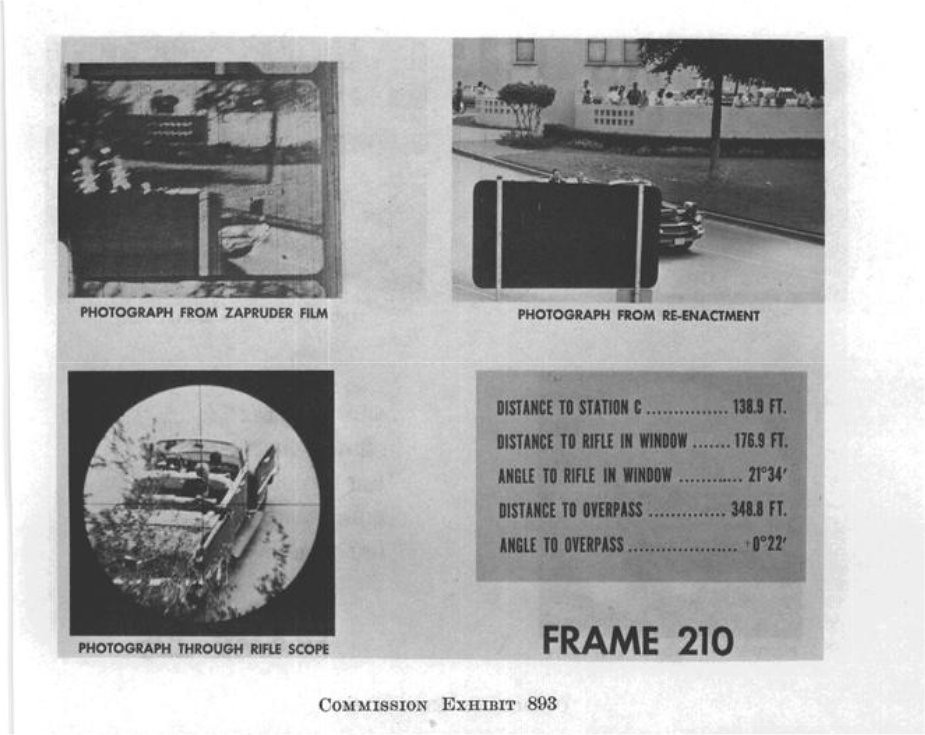
---------------------------------------------------------
The Angle from the Doctors
Mr. Specter. Can you estimate that angle for us, Doctor?
Dr. SHAW. We are talking about the angle now, of course, with the horizontal, and I would say--you don't have a caliper there, do you?
Dr. GREGORY. Yes.
Dr. SHAW. I was going to guess somewhere between 25° and 30°.
Mr. Dulles. Sorry to ask these questions.
Governor CONNALLY. That is fine. I think it is an excellent question.
Dr. SHAW. Well, this puts it right at 25°.
Mr. Specter. That is the angle then of elevation as you are measuring it?
Dr. SHAW. Measuring from back to front, it is the elevation of the posterior wound over the anterior wound.
Governor CONNALLY. Mr. Dulles, I would say I was in about this position when I was hit, with my face approximately looking toward you, 20° off of center.
Dr. SHAW. Yes; I got 27°. That didn't make much difference
we are working on getting the actual height of the sixth floor window and will do comparisons of these trajectories.
We will point out the discrepancies throughout.

First what is "the sniper's nest" [SN]?
It's in the inside left corner of the sixth floor of the TSBD - it is surrounded by a wall of boxes.
But Lee didn't build that wall, a crew of men re flooring were doing that through out the week, and all that morning.
So, boxes were along the edges of the flooring, allowing for a perfect spot for a smoke and / or lunch break, as the flooring is being done.
There is NO evidence Lee Oswald built the "snipers nest"
The Warren Commission tells us:
"He worked principally on the first and sixth floors of the building, gathering books listed on orders and delivering them to the shipping room on the first floor. He had ready access to the sixth floor, from the southeast corner window of which the shots were fired,"
Let's start with the building height - From the street straight up to the SN:
Here is Commission Exhibit 556 introduced by FBI Firearm expert Robert Frazier
Mr. EISENBERG - I am now going to ask you several hypothetical questions concerning the factors which might have affected the aim of the assassin on November 22d, and I would like you to make the following assumptions in answering these questions:
First, that the assassin fired his shots from the window near which the cartridges were found--that is, the easternmost window on the south face of the sixth floor of the School Book Depository Building, which is 60 feet above the ground, and several more feet above the position at which the car was apparently located when the shots were fired.
Second, that the length of the trajectory of the first shot was 175 feet, and that the length of the trajectory of the third shot was 265 feet.
And third, that the elapsed time between the firing of the first and third shots was 5 1/2 seconds.
Based on those assumptions, Mr. Frazier, approximately what lead would the assassin have had to give his target to compensate for its movement--and here I would disregard any possible defect in the scope.
Mr. FRAZIER - I would say he would have to lead approximately 2 feet under both such situations. The lead would, of course, be dependent upon the direction in which the object was moving primarily. If it is moving away from you, then, of course, the actual lead of, say, 2 feet which he would have to lead would be interpreted as a considerably less lead in elevation above the target, because the target will move the 2 feet in a direction away from the shooter, and the apparent lead then would be cut to one foot or 12 inches or 8 inches or something of that nature, due to the movement of the individual.
Mr. EISENBERG - Have you made calculations to achieve the figures you gave?
Mr. FRAZIER - I made the calculations, but I don't have them with me.
Mr. EISENBERG - Could you supply these to us, either in further testimony or by letter, Mr. Frazier?
Mr. FRAZIER - I have one object here, a diagram which will illustrate that lead, if you would like to use that. This is drawn to scale from these figures which you quoted as building height, and distances of 175 feet and 265 feet.
Mr. EISENBERG - For the record, these figures are approximations of the figures believed to be involved in the assassination. Will you supply the data at a later date?
Mr. FRAZIER - Yes; I can furnish that.
Mr. EISENBERG - May I have permission to introduce this as 556?
Mr. McCLOY - That will he admitted.
Mr. EISENBERG - Could you show the lead in that diagram, Mr. Frazier?
Mr. FRAZIER - In Commission Exhibit 556, it shows a triangular diagram with the vertical line on the left-hand side illustrating the height of the building. The figures of a 60-foot building height plus--
Mr. EISENBERG - That is height of the muzzle above the ground?
Mr. FRAZIER - No--window sill--60-foot window sill height above the ground, with an assumed 2- foot height in addition to accommodate the height of the rifle above the possible. the possible height of the rifle above the window sill.
The horizontal line extends outward from the building to a small rectangular block, and then a sloping line illustrates a 5-foot slope from the 175-foot point to the 265-foot point.

Notice that Mr. Frazier's diagram has both the shooter & the building facing the wrong way, but more importantly the diagram has no markings or figures to indicate what exactly is being demonstrated. But according to Frazier the window is 60 feet from the ground. NOTICE: Eisenberg also quotes the height at 60 feet.
Earlier in his testimony he introduced CE 560 - that is a diagram prepared by Commission attorney Eisenberg
Frazier discuss the distance to the target but nothing about the window height
Mr. EISENBERG - Now also you had made certain calculations concerning what we have been calling the lead that had to be given to a target, assuming various factors which were supplied to you. Do you have those calculations now?
Mr. FRAZIER - Yes, sir; the lead would amount to shooting over the target at 175 feet, a distance of 6.7 inches, and the decimal on that figure is not an accurate decimal because this figure relates to an average velocity of ammunition of this type, and is concerned with a speed of a vehicle which is also estimated, and a distance which may or may not be exactly accurate.
But at a ground speed of 11 miles an hour, it would be necessary to shoot over or lead a target 6.7 inches for the bullet to hit the intended spot on the target At 265 feet the lead would be .51 feet, or 6.1 inches.
I might say that the variation, that of less lead at the longer distance, is in great part due to the fact that the target is farther away and that the shot is more nearly in line with the direction in which the target is moving, which would account for much of the drop in the amount of lead.
And, in addition, I calculated this on the basis of the fact that there was a slight slope between the 175-foot and the 265-foot location downwards away from the shooter, which would also tend to more nearly cause the target to be moving in the same path as the bullet.

NOTICE the window height in the above diagram is different than what Mr. Frazier testified to and what Eisneberg asked - a difference of 8 feet
If we overlay the angles from a 60 ft window to a 68 ft window we have starkly differently trajectories.

looking at the bottom of Eisenbergs CE 560, he actually puts the height of the gun to the ground at 70 ft at distance of 175ft,
and 75 ft, at a distance of 265 ft, allowing for a 5 ft road drop.

I think if you backed up from this angle you'd miss the window

---------------------------------------------------------
The Angle from the Doctors
Mr. Specter. Can you estimate that angle for us, Doctor?
Dr. SHAW. We are talking about the angle now, of course, with the horizontal, and I would say--you don't have a caliper there, do you?
Dr. GREGORY. Yes.
Dr. SHAW. I was going to guess somewhere between 25° and 30°.
Mr. Dulles. Sorry to ask these questions.
Governor CONNALLY. That is fine. I think it is an excellent question.
Dr. SHAW. Well, this puts it right at 25°.
Mr. Specter. That is the angle then of elevation as you are measuring it?
Dr. SHAW. Measuring from back to front, it is the elevation of the posterior wound over the anterior wound.
Governor CONNALLY. Mr. Dulles, I would say I was in about this position when I was hit, with my face approximately looking toward you, 20° off of center.
Dr. SHAW. Yes; I got 27°. That didn't make much difference
we are working on getting the actual height of the sixth floor window and will do comparisons of these trajectories.





